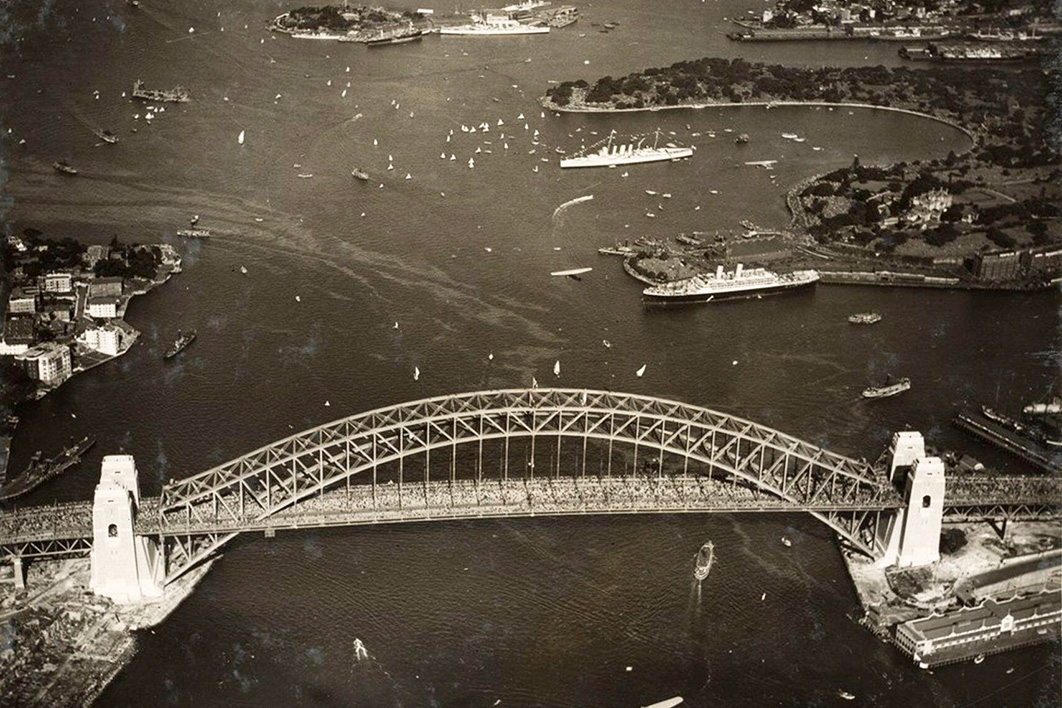If you walk along the waterfront at Circular Quay and look down at the pavement, you’ll likely encounter a series of circular metal plaques, each one bearing a brief passage about Sydney and the name of the famous writer who penned it. There are impressions from fleeting visitors like Mark Twain, Joseph Conrad and Robert Louis Stevenson — who reports that “there is material for a dozen buccaneering stories to be picked up in the hotels at Circular Quay” — and lines from long-term residents including Patrick White, Ruth Park and Kenneth Slessor. Slessor’s plaque quotes from “William Street,” his 1939 ode to Kings Cross: “You find this ugly, I find it lovely.”
I have always loved the Circular Quay Writers Walk. On trips to the city as a child, I would annoy whomever I was with by insisting we stop and read each inscription in turn. I am fascinated by the synergetic relationship between space and literature, by how places give rise to stories and are shaped in turn by the stories told about them. What would London be without Dickens, or Dickens without London? Numerous popular and academic books have been written about literary London, Paris, New York and Berlin, but when I searched for a similar study of Sydney’s representation in literature, I came up empty-handed. My new book, Sydney and Its Waterway in Australian Literary Modernism, is an attempt to fill that gap.
I quickly realised that it would be impossible to include all of Sydney’s literary lives in one volume. As Australia’s first and most populous city, Sydney has featured in fiction for as long as settlers have been writing. In the end, I chose to focus on the years between the two world wars, a period of rapid change for both Sydney and Australian literature, when Sydney as a modern city and the modern Australian novel emerged together and influenced each other’s development.
From the early 1920s, demolition swept away much of the old colonial town. When the Harbour Bridge was opened in 1932 as the longest single-span bridge in the world, it was heralded as evidence that Sydney could hold its own alongside the great metropolises of Europe and America.
At the same time, it was becoming harder to ignore the fact that Sydney, like all big cities, was marked by violence and injustice. Political agitation and calls for urban reform grew during the Great Depression as the city’s forgotten poor suffered. In 1938, at the sesquicentenary of the invasion, Aboriginal people staged a protest at the Australian Hall in Elizabeth Street, designating 26 January as a “Day of Mourning.”
Amid this ferment, writers participated publicly and through their fiction in debates about the city’s identity, culture and values. Remarkably, the most active and accomplished of them were women, so it was an easy decision to focus on their work. Writers like Christina Stead, Dymphna Cusack, Eleanor Dark, Kylie Tennant and M. Barnard Eldershaw were excited by the opportunities provided by the modern city and the modern novel to challenge old norms of living and writing. They were also passionate supporters of social justice and urban reform; they believed Sydney could be better, and they wrote in part to imagine or agitate for that better city.
Why did I include the word “waterway” in the title of my book? As I was writing it, I made a habit of “walking” the fiction I read, marking up contemporaneous maps of the city with major narrative events. On these walks, I’d inevitably find myself back at the harbour. Every novel I read mapped Sydney by its watery and littoral places: the imposing Heads that mark the transition from city to wider world, the overseas terminal at Circular Quay with its influx of new people and new ideas, the then working docks of Woolloo-mooloo where men laboured under unfair conditions, secluded stretches of beach in undeveloped North Sydney where ships wrecked and lovers met.
These places allowed the writers to explore Sydney’s history as a colonial outpost and its future as a world metropolis, as a local environment and as a node in increasingly globalised socioeconomic networks. Water — life-giving but unpredictable, ultimately impervious to human intervention — provided writers with the means to grapple through metaphor with the new freedoms and dangers of the big city, to navigate in literature the wild tides of modern existence.
Despite having been written more than eighty years ago, Sydney fiction of the interwar period has proved remarkably prescient. Clever, earnest and searching, female writers asked questions we continue to struggle with today: do urban environments enforce divisions between rich and poor, or can they close the gap? How do sex and gender affect individuals’ ability to participate in the city? How do we mitigate the ecological cost of urban development?
With the climate emergency, pandemics and housing crises making life in cities increasingly complex, perhaps a journey on the waves of Sydney’s literary past can tell us something about our uncertain futures. •




